An important feature of the trapeze dress is that it suits most women. At the same time, a beautiful image is combined with relative ease of sewing. The article tells about popular types of trapeze dresses and how you can sew them step by step yourself.
- Essential elements of a trapeze dress
- Recommendations for choosing fabric
- Necessary tools for constructing a pattern
- Step-by-step construction of the pattern
- Instructions: how to cut and sew a trapeze dress using a ready-made pattern
- With a difference in length
- For a girl
- On the yoke
- A-line dress for plus size women
- Sleeveless A-line dress
- Do-it-yourself trapeze sundress
Essential elements of a trapeze dress
When cutting a trapeze dress, the pattern should contain the following elements:
- The shelf consists of one piece.
- The back is usually made from one piece of fabric, but in some versions it may include two pieces.
- Sleeves can be of different types: full, three-quarter, short. In some models they may be absent.
- A collar may be used. It must consist of one piece. Some models do not provide for the use of a collar.

If you are sewing pockets to decorate a dress, you will need to prepare patterns for the valance, patch pocket, facings, flap, pocket sacks. Decorations (such as a flounce) can be used.
Recommendations for choosing fabric
A-line dresses can be made from almost any fabric. However, there are materials that are particularly popular. Designers prefer to use thick knitwear, linen, staple or cotton for this purpose.
When choosing the most suitable fabric for a girl, you need to consider the image you want to create and the time of year when you plan to wear such a dress.
It is convenient if your wardrobe contains trapeze dresses designed for different situations and seasons.
Necessary tools for constructing a pattern
Before work, you need to prepare everything you need. To cut and sew a women's trapeze dress, you will need the following tools and materials:
- You will need thick paper to make drawings and patterns.
- To draw you will need a simple pencil with a hardness of B or HB.
- You will need two rulers, 50 and 90 cm long, as well as a triangle.
- You will need a measuring tape.
- To apply marks on fabric, you will need to prepare chalk or a piece of soap.
- To cut thick fabric, you will need tailor's scissors.
To cut out the dress, you will also need safety pins.
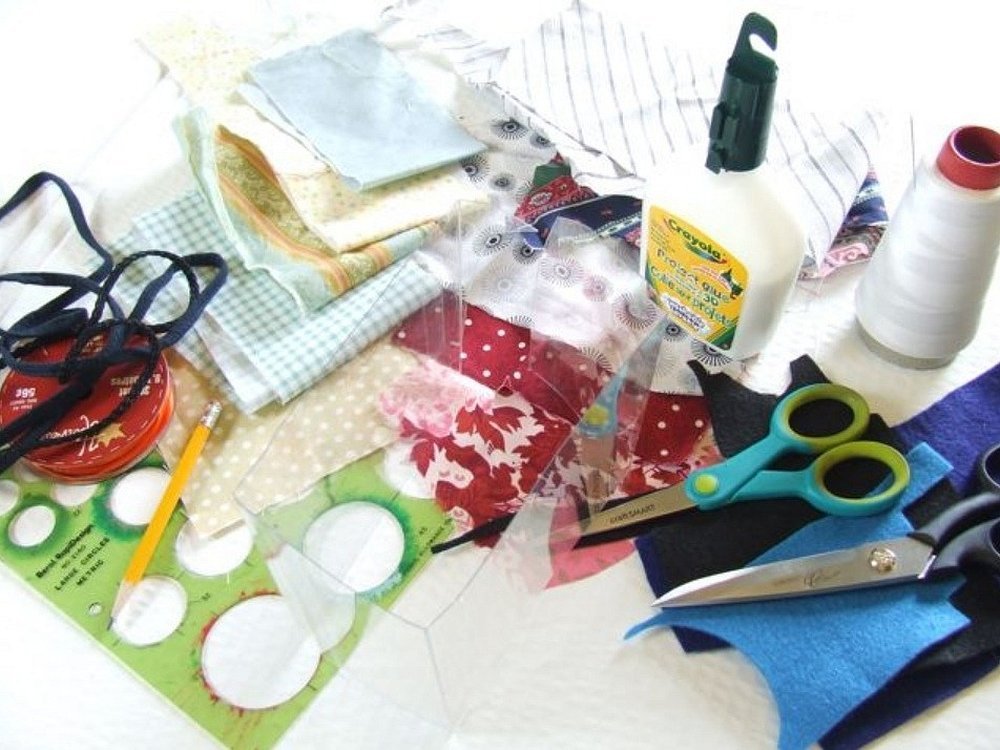
Step-by-step construction of the pattern
To make a dress that fits your figure perfectly, you need to take the correct measurements needed to create a pattern.
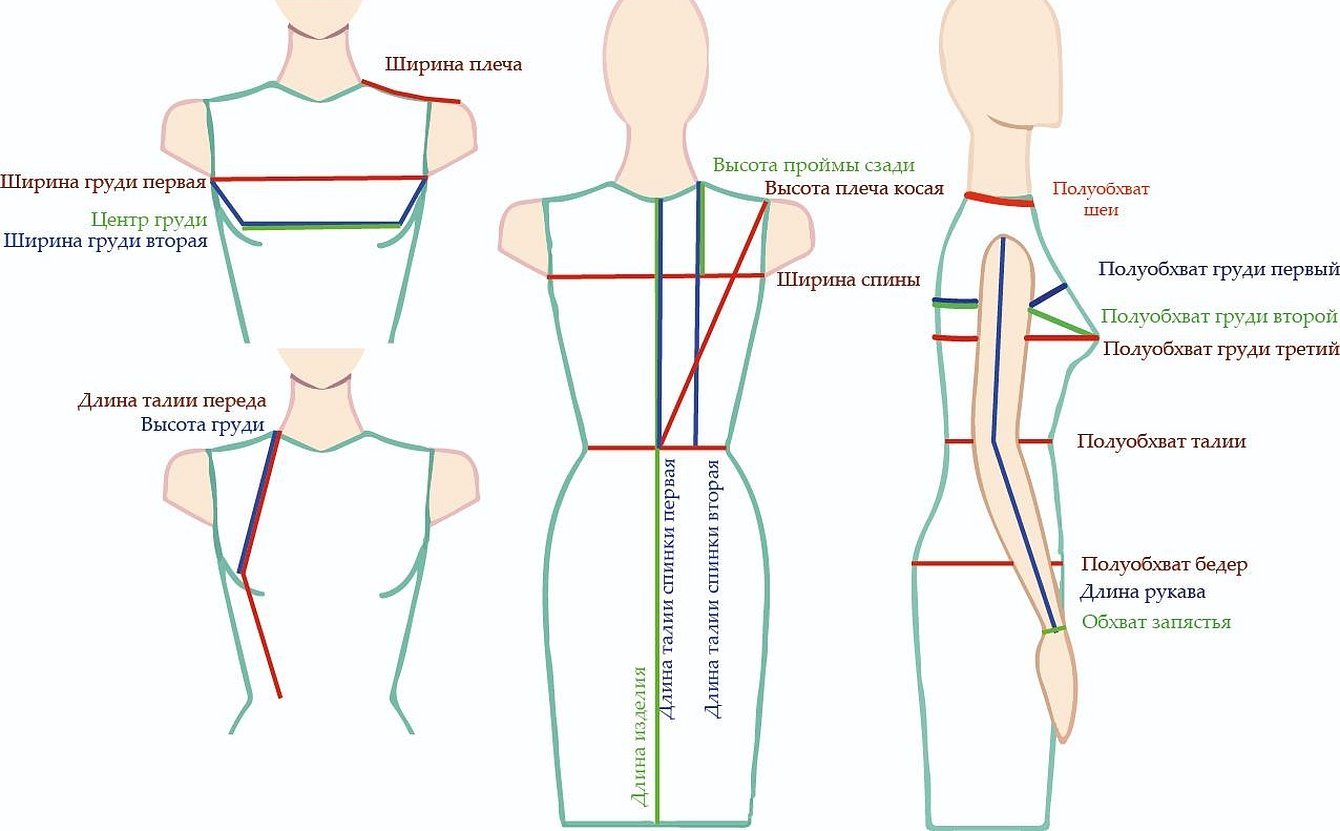
It is recommended to use the bra that is intended to be worn under the dress, and shoes with a suitable heel length. The latter is important in order to correctly determine the length of the dress.
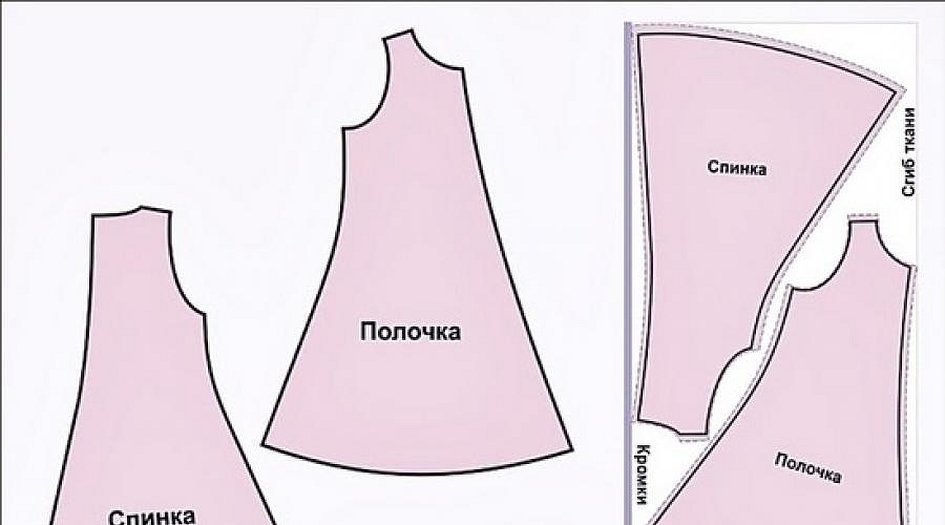
Beginners are not recommended to immediately take on a complex pattern. You should start with one of the simplest options. To create a pattern, you must follow the following instructions:
- Before making the drawings, it is necessary to measure the chest circumference. This length should be divided into four parts.
- On a sheet of paper prepared in advance, you need to mark off the resulting value horizontally along the top edge.
- Measure the armhole size and measure it down from the top edge.
- Now you need to find out your waist circumference and divide it into four parts.
- This length must be measured off the left side of the sheet.
- Measure the distance from the chest and plot this distance vertically.
- Now draw what the neck will look like.
- You need to mark a point on a piece of paper indicating the length of the dress.
- Draw a line down from the waist, making the hem wider.
- Now, after making the back part, move on to the front, placing the darts in the right places.
- From the upper edge of the armhole, measure three centimeters down and make a mark. The resulting point is connected to the upper edge of the armhole.
Now the pattern is constructed. It is transferred to the fabric and sewing begins.
Instructions: how to cut and sew a trapeze dress using a ready-made pattern
This dress has a large number of styles and options, among which many can find one that they like. Below we will talk about the most popular varieties.
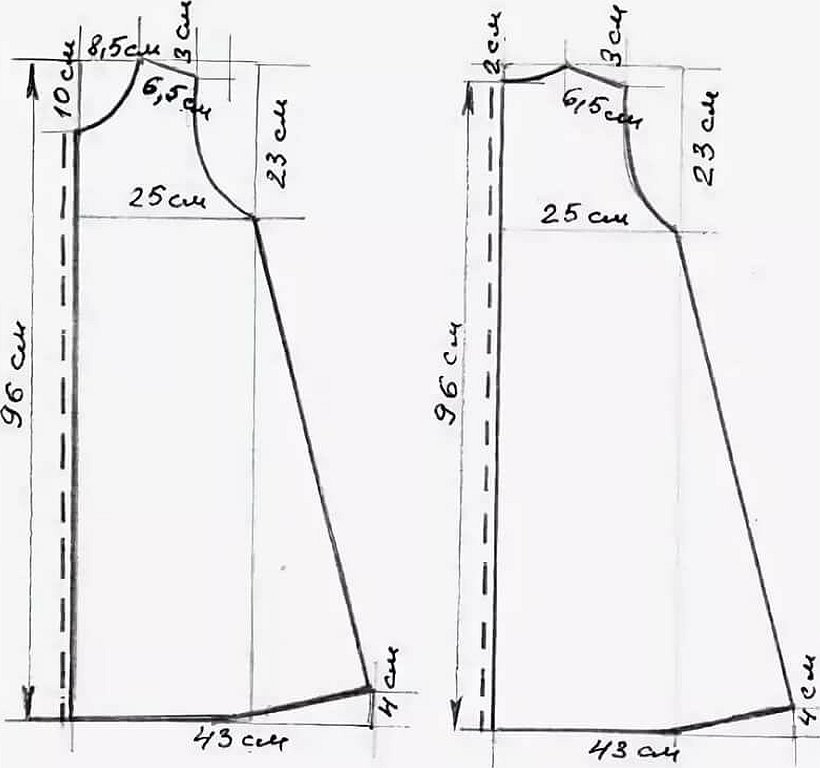
With a difference in length
This dress can be made by novice craftswomen independently with minimal labor and time. Its distinctive feature is that the front part is shorter than the back.
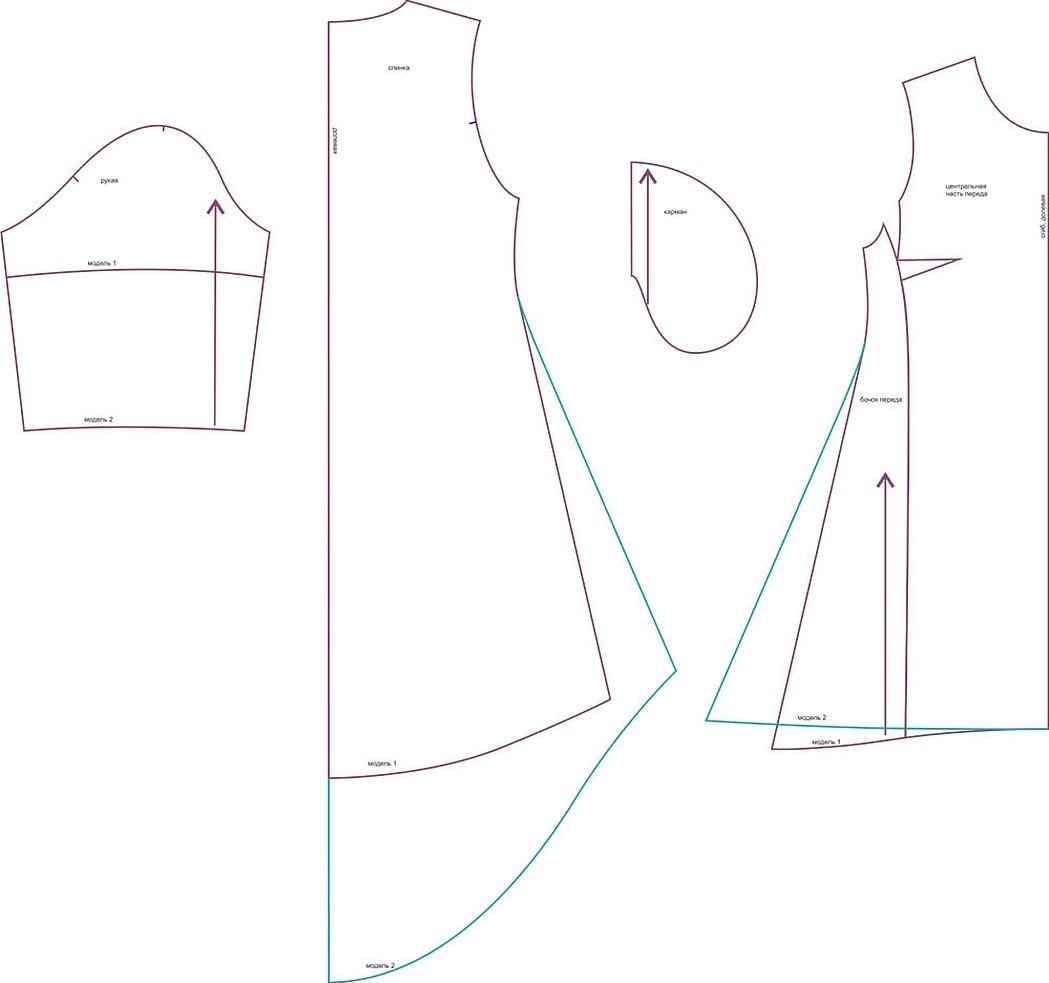
This style of dress looks impressive, creating the image of a mysterious and romantic woman.
The cut and sewing can be done in the usual way, with the following exceptions:
- The length of the dress in the front and back is determined differently.
- When making side seams, you need to ensure that the length of the front and back pieces match at this point.
This style can be used for a "cocktail style" or as everyday office wear.
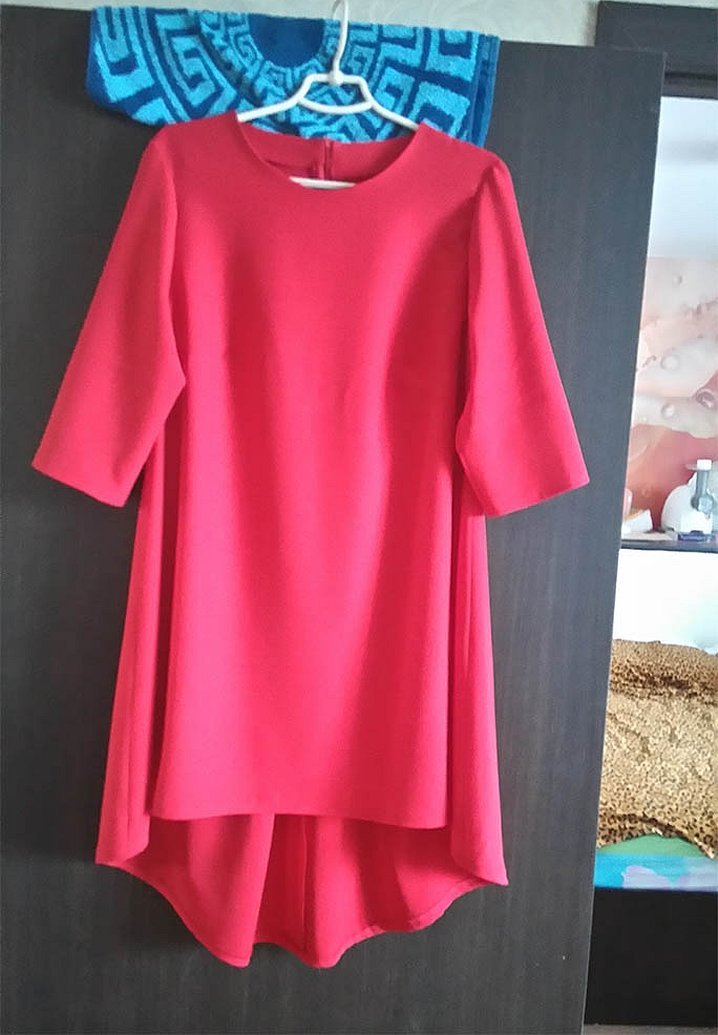
For a girl
When making a trapeze for a little girl, it is enough to use existing clothes to create a pattern.
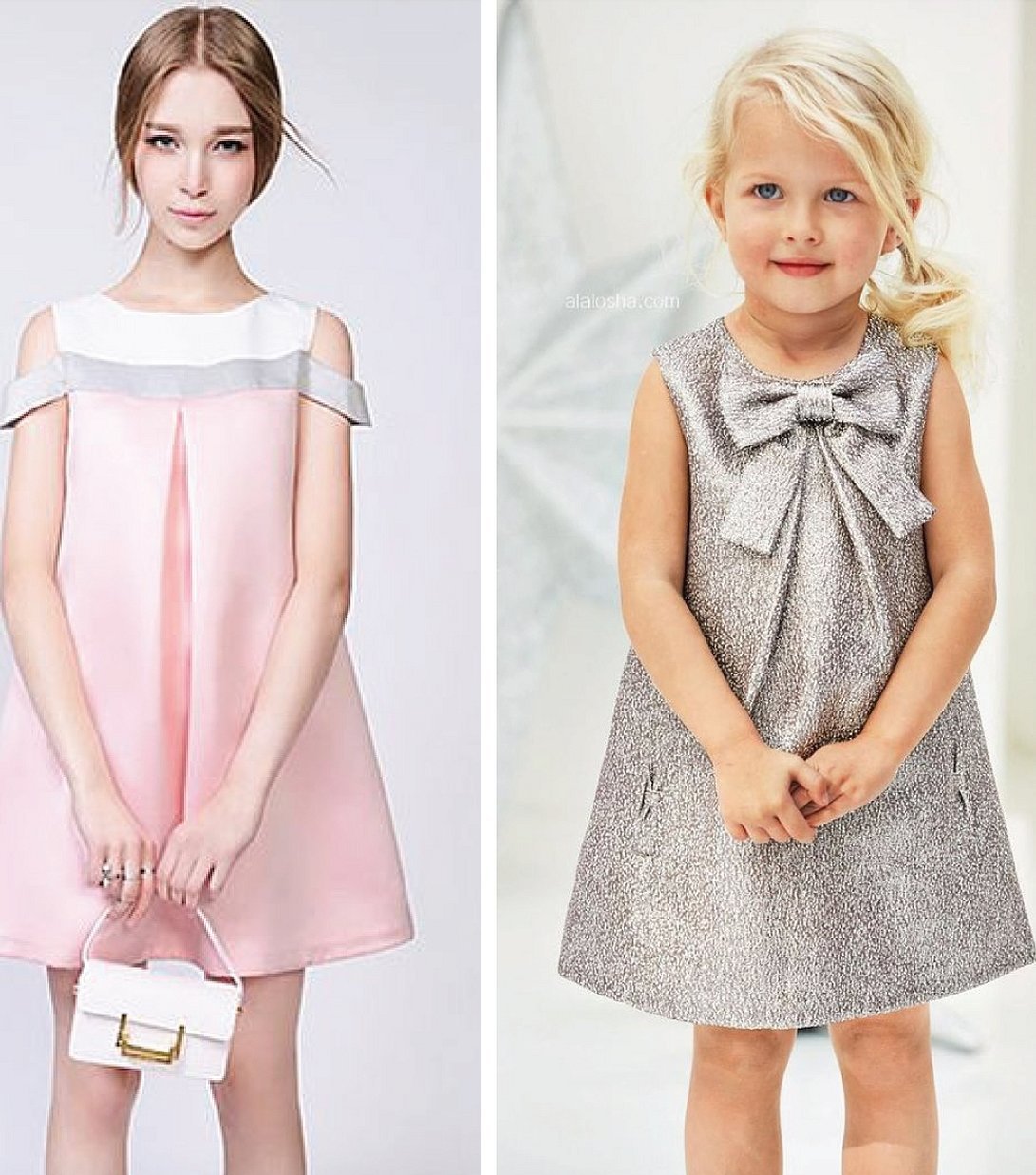
An important point in the cutting process is determining the location of the lower point of the armhole. To check the accuracy of the construction, you need to make sure that the following condition is met:
- Take a quarter of the chest circumference and add 3 cm.
- From the top of the pattern, you need to set aside one eighth of the chest circumference, increased by 7 cm.
Once the neckline and armhole are taken into account on the pattern, you can start sewing according to the step-by-step instructions:
- You can decorate the shelf for your child with embroidery, a bow or an applique.
- Process the side and shoulder seams.
- Finish the neckline and armholes with bias binding.
- Use the same method to trim the bottom of the dress.
On the yoke
The peculiarity of the trapeze blouse pattern of this style is the use of a yoke in the front and back. The dress is cut and sewn in accordance with the general rules, except that it is necessary to use a yoke. To do this, the front part is placed on the back and a horizontal line is drawn along which the yoke will be separated. When sewing it, it is necessary to provide an allowance of 1 cm.
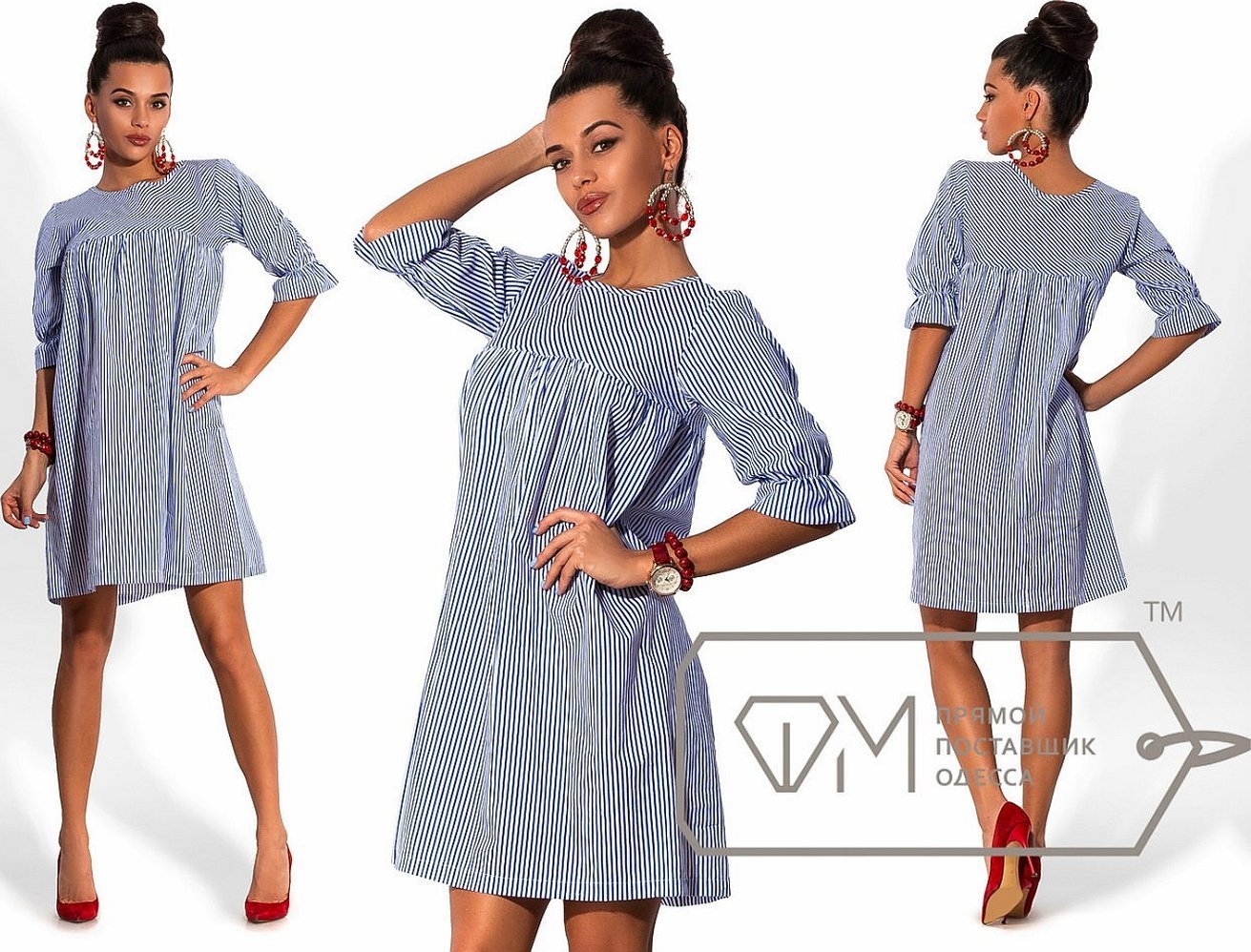
This dress is able to correct figure flaws well. The trapeze, as Burda claims, looks elegant, romantic and reserved at the same time.
Please note! The yoke line can be located at different heights: below the chest or at the straps.
This style is particularly suitable for those who are expecting a child. Some options require a high level of craftsmanship to make.
A-line dress for plus size women
A-line dress pattern for plump women allows you to hide the fullness of your figure. If it is floor length, then such a cut conceals the fullness.
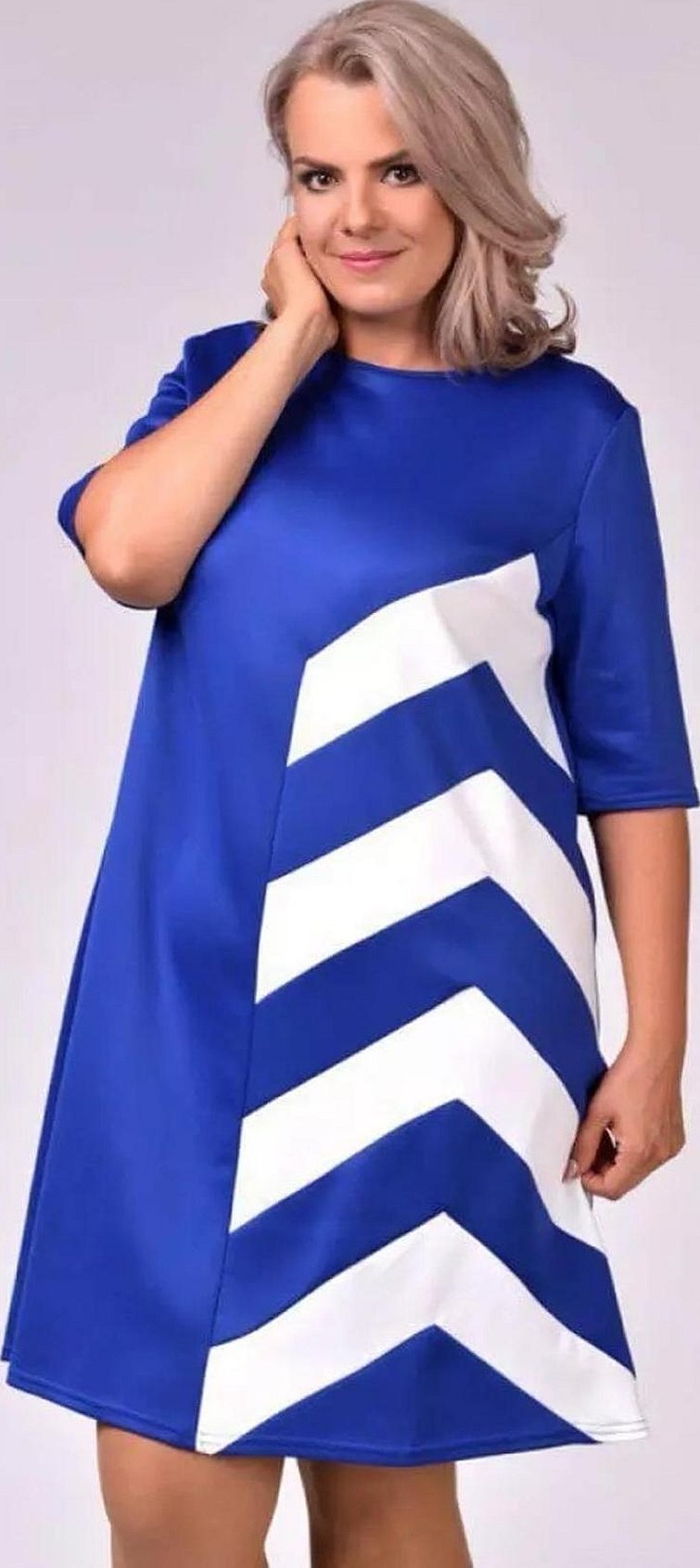
In this case, plain fabric or fabric with a large pattern is often used. The dress can be flared. Also popular are pear-shaped ones - when the bottom of the dress is slightly pulled inward.

Sleeveless A-line dress
This version of the trapeze is worn as an evening or business dress. The sleeveless dress is especially suitable for those women who have a beautiful shoulder line and neck.
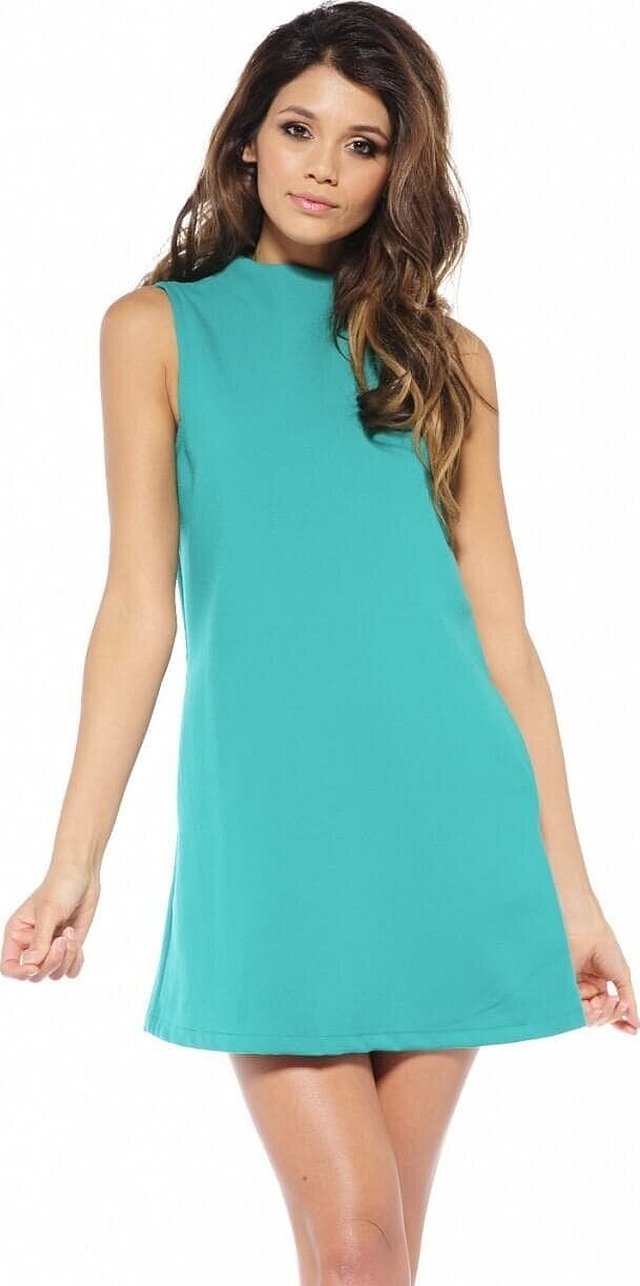
This style is cut and sewn in accordance with the general rules for creating trapeze dresses.
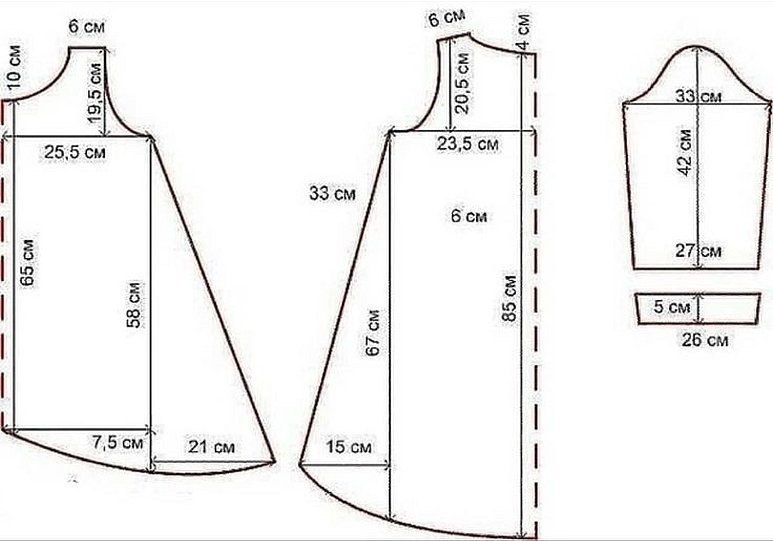
Do-it-yourself trapeze sundress
For sewing, you can use cotton fabric. With a cut width of 150 cm, you will need a length equal to the hip volume increased by 25 cm.
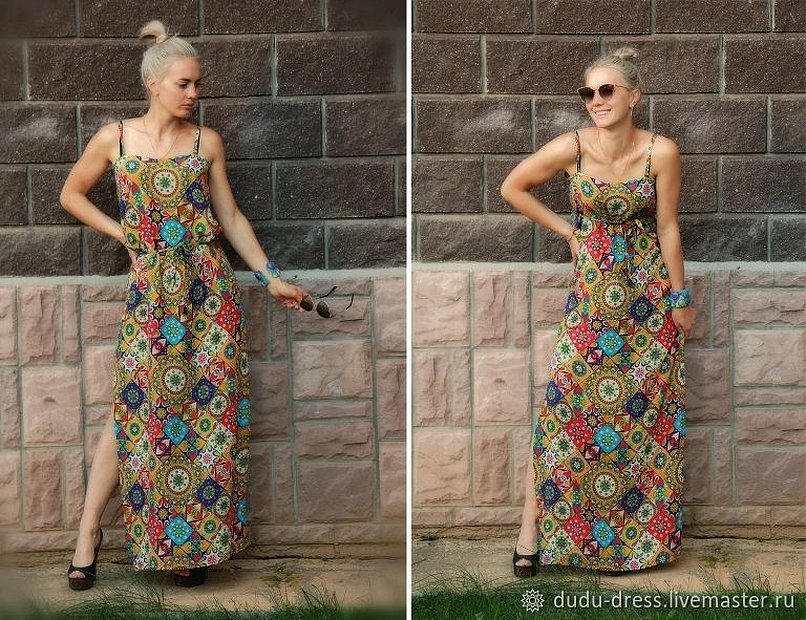
You will also need a sewing machine, measuring tape, dressmaker's scissors, threads, pins and chalk. When making a sundress pattern for an A-silhouette, you need to prepare the required amount of fabric.

For a sarafan, you need to measure two trapezoids. The upper part should be 10 cm larger than the chest circumference, the width at the waist and at the bottom will be the hip circumference increased by 20 cm.
In addition, you need to prepare fabric for making the belt (150×5 cm) and straps (40×5 cm).
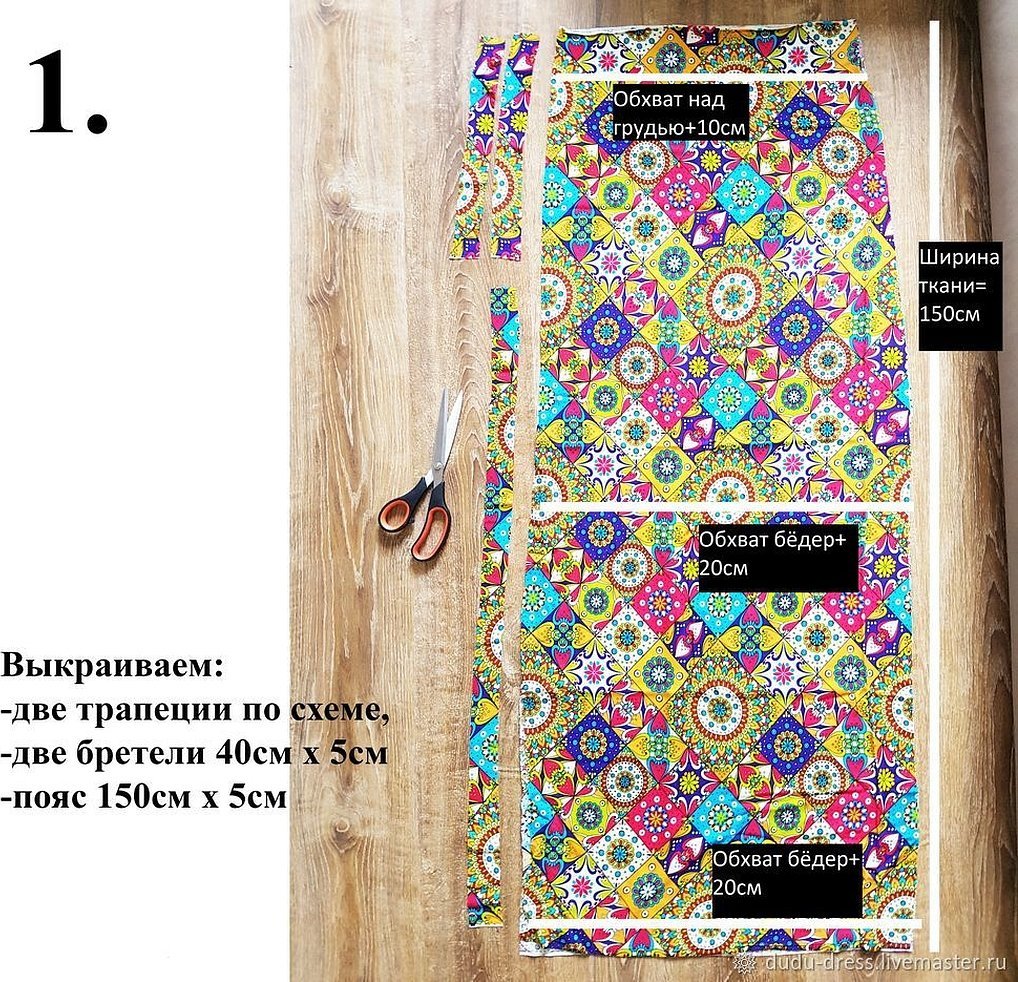
Sewing a trapeze sarafan according to the pattern is done in the following way:
- The side seam needs to be sewn. This is done along the entire length. Then it needs to be processed with a frequent zigzag. The appropriate dimensions for this are 1 cm long and 0.5 cm wide.
- Before doing the second seam, you need to process the edges of the fabric separately. On this side, make a cut at the level of the middle of the thigh. The fabric is sewn from above to the beginning of the cut. A staple is made on it.
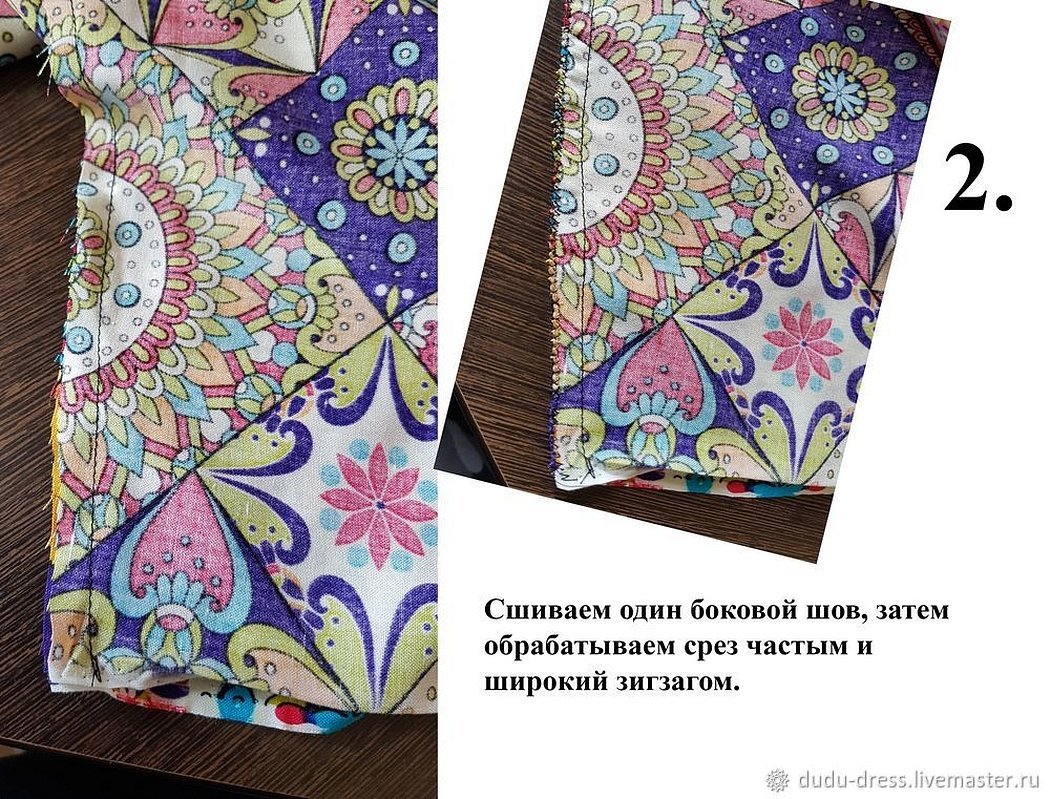
- You need to iron both seams on the outside, as well as the seam allowances on the inside.
- Now you need to try it on. In this case, you need to determine the exact length of the dress. It needs to be cut at this level, leaving 2 cm to fold the fabric. The allowance is folded inward and ironed.

- On the side where the fabric approaches the cut, a “U”-shaped treatment is required.
- To make the straps and belt, fold the fabric with the pattern inside and make a seam at a distance of a centimeter from the edge. If the fabric is crumbling, then the edge is processed with a zigzag stitch. After finishing, turn the belt and straps right side out.
- The fitting is done with the straps pinned in place. This should be done in the underwear that you plan to wear the sarafan in. It is important to adjust their length so that the underwear does not show through.
- The top edge is folded under and the straps are sewn on from the inside.

The trapeze dress is not only elegant, but also has a large number of options, allowing each woman to choose the most suitable one. The romanticism and femininity of the dress are combined with restraint and grace.




